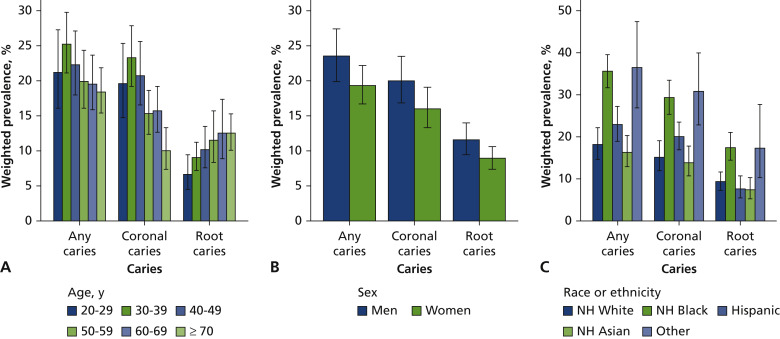Background
Untreated caries is a prevalent disease that is associated with a substantial health
and economic burden. Many past efforts have assessed the epidemiology of untreated
caries, and this study provides the most up-to-date figures on the distribution and
determinants of the disease in the adult US population for the period 2017 through 2020.
Methods
Using data from the 2017-2020 National Health and Nutrition Examination Survey, the
author derived estimates for untreated caries prevalence in the adult US population.
The author conducted subgroup analyses to assess how the epidemiology differed between
coronal and root caries and how the disease was distributed among population subgroups.
Results
On the basis of a weighted sample representative of 193.5 million adults, the prevalence
of untreated caries was found to be 21.3%. Specific prevalence of coronal and root
caries were 17.9% and 10.1%, respectively. Caries was most prevalent in those aged
30 through 39 years (25.2%) and 40 through 49 years (22.3%), men (23.5%), those of
other (36.5%) or non-Hispanic Black (35.6%) race or ethnicity, those with family income
to poverty ratio of 0.5 through 1.0 (46.2%) or less than 0.5 (37.3%), those with educational
attainment less than high school graduation (39.6%), those who did not have health
insurance (42.1%), and those who were underweight (25.1%) or obese (23.5%).
Conclusions
Untreated caries is present in more than 1 in 5 adults within the US population and
is disproportionately distributed among those of lower socioeconomic status.
Practical Implications
There is a substantial unmet health care need in the US adult population for the prevention
and management of untreated caries, and public health efforts should aim particularly
to address disease within those subgroups who are at a disproportionately high risk.


